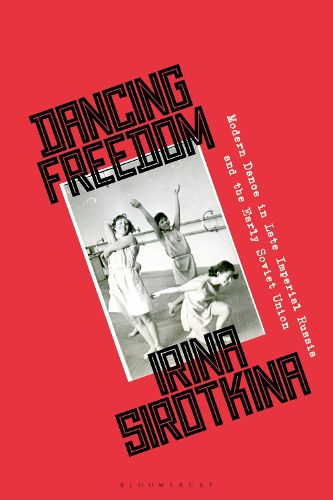Readings Newsletter
Become a Readings Member to make your shopping experience even easier.
Sign in or sign up for free!
You’re not far away from qualifying for FREE standard shipping within Australia
You’ve qualified for FREE standard shipping within Australia
The cart is loading…






For a long time, dance scholars and the public were hardly aware that modern dance existed in Russia. This book, however, delves into its presence, significance and survival in the late Tsarist and Soviet era, showing the large and significant positive contribution this made to the history of modern dance.
A creation of liberal body politics, 'free' or 'modern' dance flourished in late Imperial Russia and the early Soviet Union, before the hardening of communist regimes. An ideal embodiment of emancipation, free dance attracted dancers and audiences, including a significant number of modernist artists and intellectuals.
This book looks in particular at Isadora Duncan and her impact on Stanislavsky's methods, as well as on the ballet choreographer Michel Fokine. It throws light on Duncan's Moscow School, biomechanics and many modern dance studios of the time, their role in creating new systems of training - different from ballet - and their creation of a modern dance 'body'.
We come to see free dance into the years of Stalin's Cultural Revolution, where choreographers had to adapt to the new ideological environment - a far cry from the previous freedom of modern dance.
$9.00 standard shipping within Australia
FREE standard shipping within Australia for orders over $100.00
Express & International shipping calculated at checkout
Stock availability can be subject to change without notice. We recommend calling the shop or contacting our online team to check availability of low stock items. Please see our Shopping Online page for more details.
For a long time, dance scholars and the public were hardly aware that modern dance existed in Russia. This book, however, delves into its presence, significance and survival in the late Tsarist and Soviet era, showing the large and significant positive contribution this made to the history of modern dance.
A creation of liberal body politics, 'free' or 'modern' dance flourished in late Imperial Russia and the early Soviet Union, before the hardening of communist regimes. An ideal embodiment of emancipation, free dance attracted dancers and audiences, including a significant number of modernist artists and intellectuals.
This book looks in particular at Isadora Duncan and her impact on Stanislavsky's methods, as well as on the ballet choreographer Michel Fokine. It throws light on Duncan's Moscow School, biomechanics and many modern dance studios of the time, their role in creating new systems of training - different from ballet - and their creation of a modern dance 'body'.
We come to see free dance into the years of Stalin's Cultural Revolution, where choreographers had to adapt to the new ideological environment - a far cry from the previous freedom of modern dance.